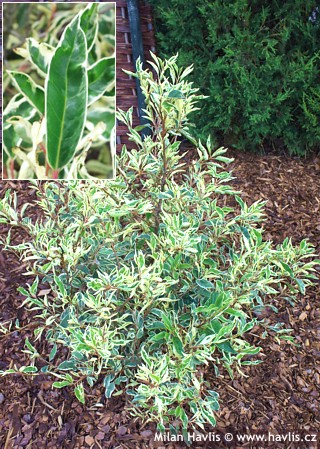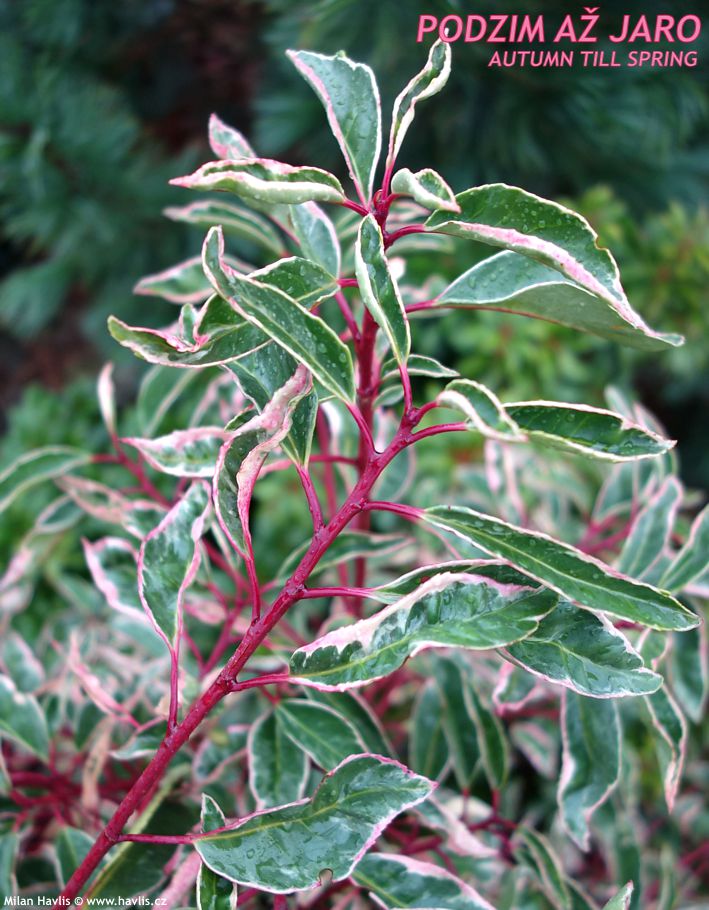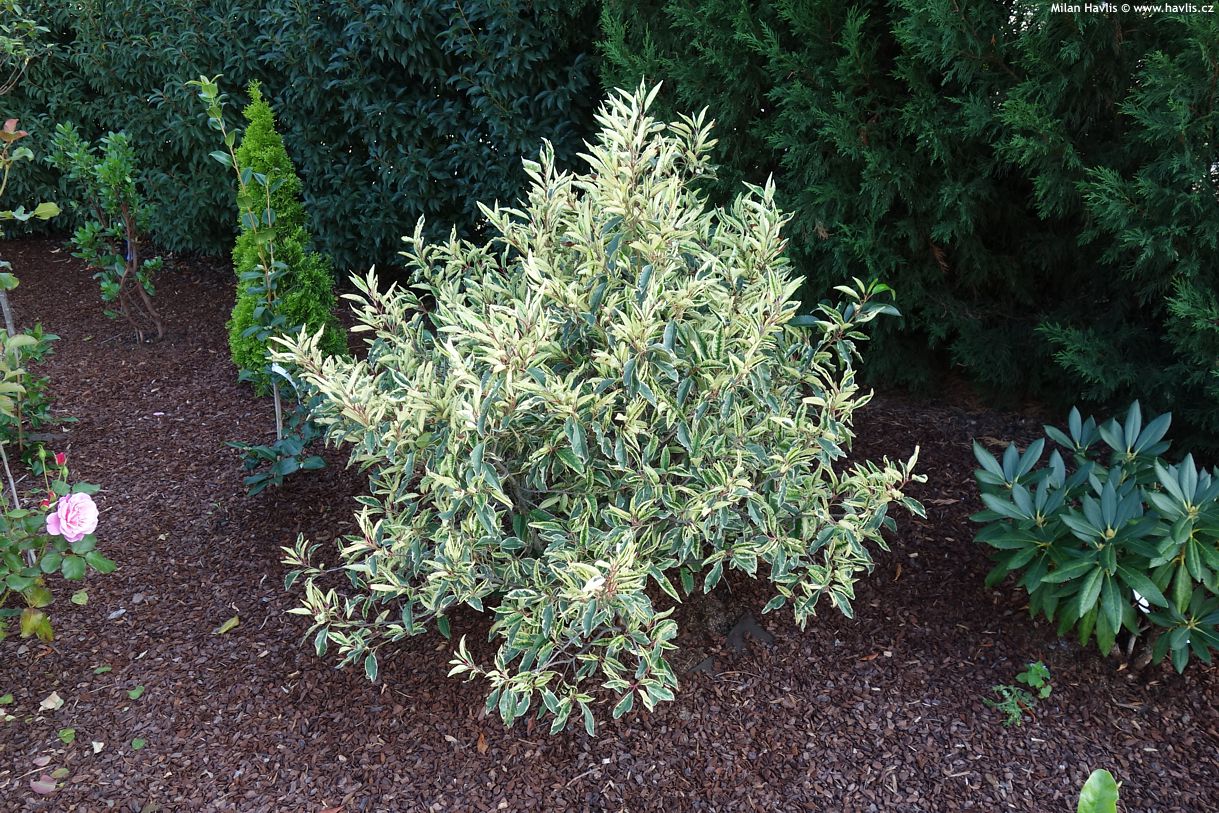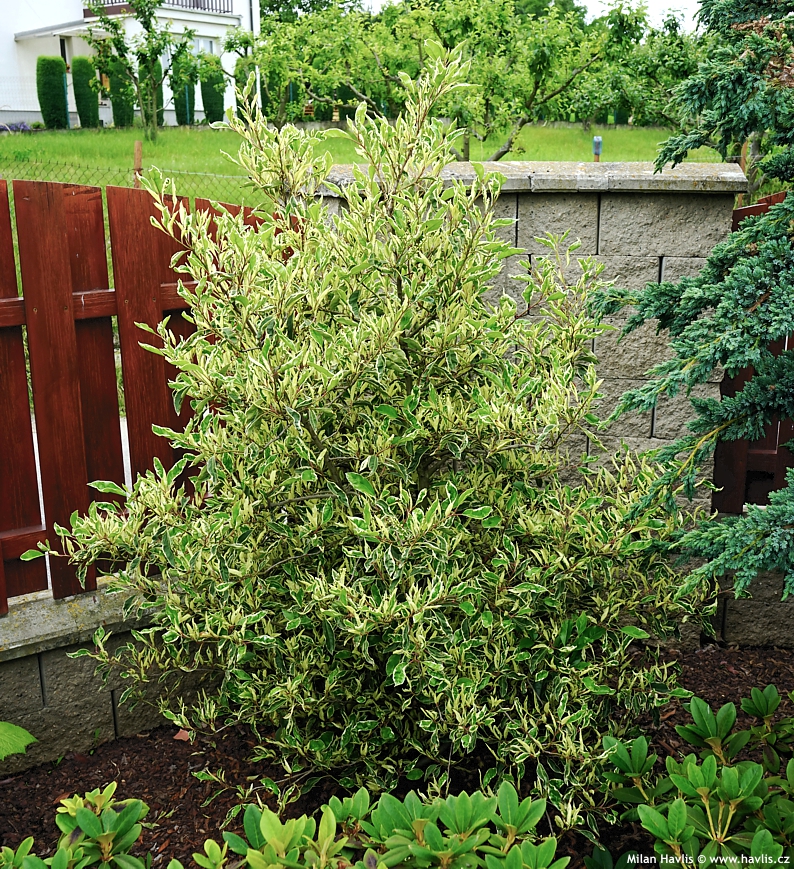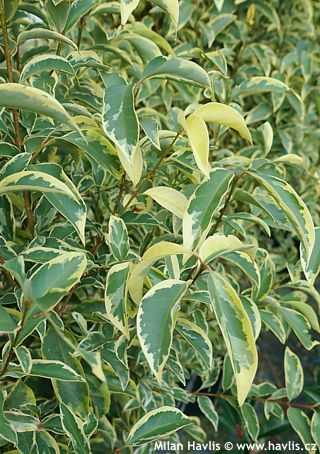Prunus lusitanica 'VARIEGATA' Portugal laurel


Prunus
We specialize in evergreen plants and offer the widest possible range of hardy, quality plants.
Portugal laurel, irrespective of its origin, quite surprisingly belongs to the hardiest evergreen plants for our climate (USDA zone 6) and performs better than some large-leaved cherry laurels.
Variegata is an eye-catching mutation of Portugal laurel. It bears evergreen, narrowly elliptic, slightly undulated, deep green leaves with white margins which turn pink in autumn and winter when leaf stalks and young twigs change colour to bright purple red. Blossoms are numerous racemes, compound of white, sweetly scented flowers in late May and early June. Fruits are black berries, and seeds from unripe berries contain the same poison found in bitter almonds.
It grows moderately into a compact, densely branched shrub similar to Angustifolia. In our climate it reaches 2.5-3m tall and about 2m wide. Pruning is not needed but is possible in April or mid July.
It loves full sun but will thrive almost anywhere. In locations with cold and long winters we suggest finding it a location without direct winter sunlight that might burn its leaves. Once established it tolerates periods of summer drought. On the other hand, the moister the soil is the richer and healthier foliage you can expect. The soil is preferred acidic, well-drained, and rich in organic matter – it benefits from clay at the bottom part of its root system but may not be transplanted into pure clay. In winter provide extra watering in frost-free periods when the ground is not frozen. We have observed perfect hardiness down to -24°C so far (USDA zone 6), and expect it to take a slightly stronger frost.
Last update 15-11-2015

































